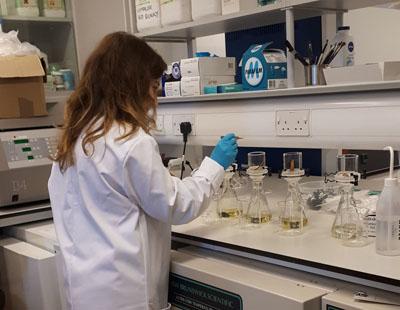Laboratories
Archaeology has outstanding laboratory facilities with general purpose and teaching spaces as well as specialist research labs.

Postgraduate archaeology students can access a range of laboratories:
Finds processing and thin section laboratory
This dedicated space is for initial post excavation processing and cleaning of artefacts, osteological material, and environmental remains such as soils and sediments. The laboratory is equipped with deep sinks and sediment traps for wet sieving as well as drying ovens and benches for laying out material. It is also equipped with a fume cupboard and cutting, mounting and grinding equipment for the preparation of thin-sections for microscopy.
Chemical laboratory
This room is equipped for pre-treatment and collagen extraction of samples for stable isotope analysis; this area is also used for the preparation of environmental samples involving wet chemistry. The facilities and instruments available include a large programmable furnace, fume cupboards, drying ovens, autoclave, centrifuges, a freeze drier, precision electronic balances, a Millipore water purification system, as well as Endecott sieves and pH meters.
Microscopy laboratory
The microscopy lab is equipped with a suite of microscopes including stereo microscopes, compound incident, transmitted and polarized light microscopes, and USB dinolites. These instruments have a wide range of research applications and are used in the analysis of artefacts, environmental remains (e.g. palynological samples) and ceramic and histological thin-sections.
Archaeology teaching laboratory
This large, well-equipped teaching laboratory houses extensive and comprehensive human and animal bone reference collections as well as hominin and primate casts. It is equipped with microscopes, identification atlases, calipers and osteometric boards.
Osteology laboratory
Located adjacent to the human and animal reference collections, this laboratory is a facility designed for osteological research. Archaeology has facilities for 3D scanning of artefacts and osteological remains.
Additional facilities
Additional facilities and services for materials analysis are available within the University of Edinburgh, including XRD/XRF, scanning electron and confocal microscopy, and also CT and μCT scans and specialised imaging software. Archaeology also benefits from strong links to National Museums Scotland and the Scottish Universities Environmental Research Centre at East Kilbride.

